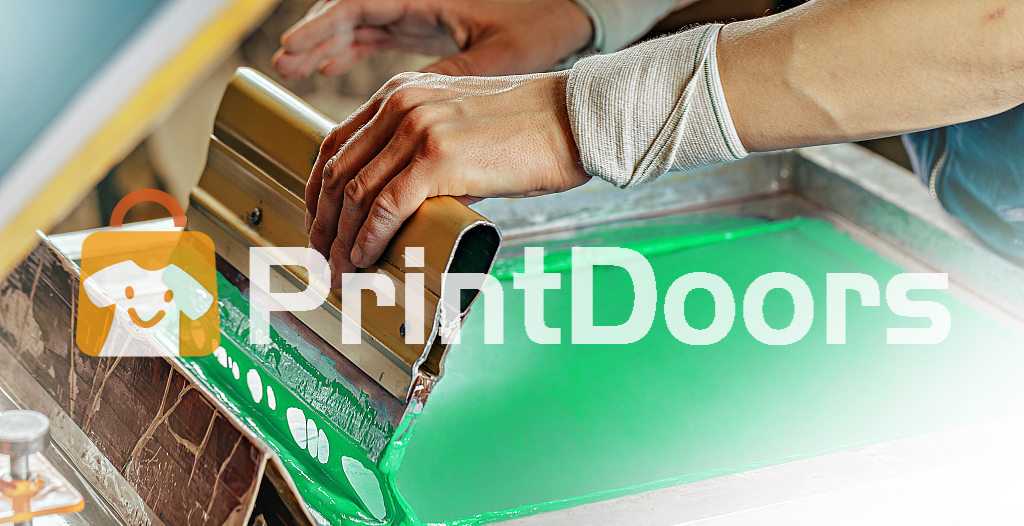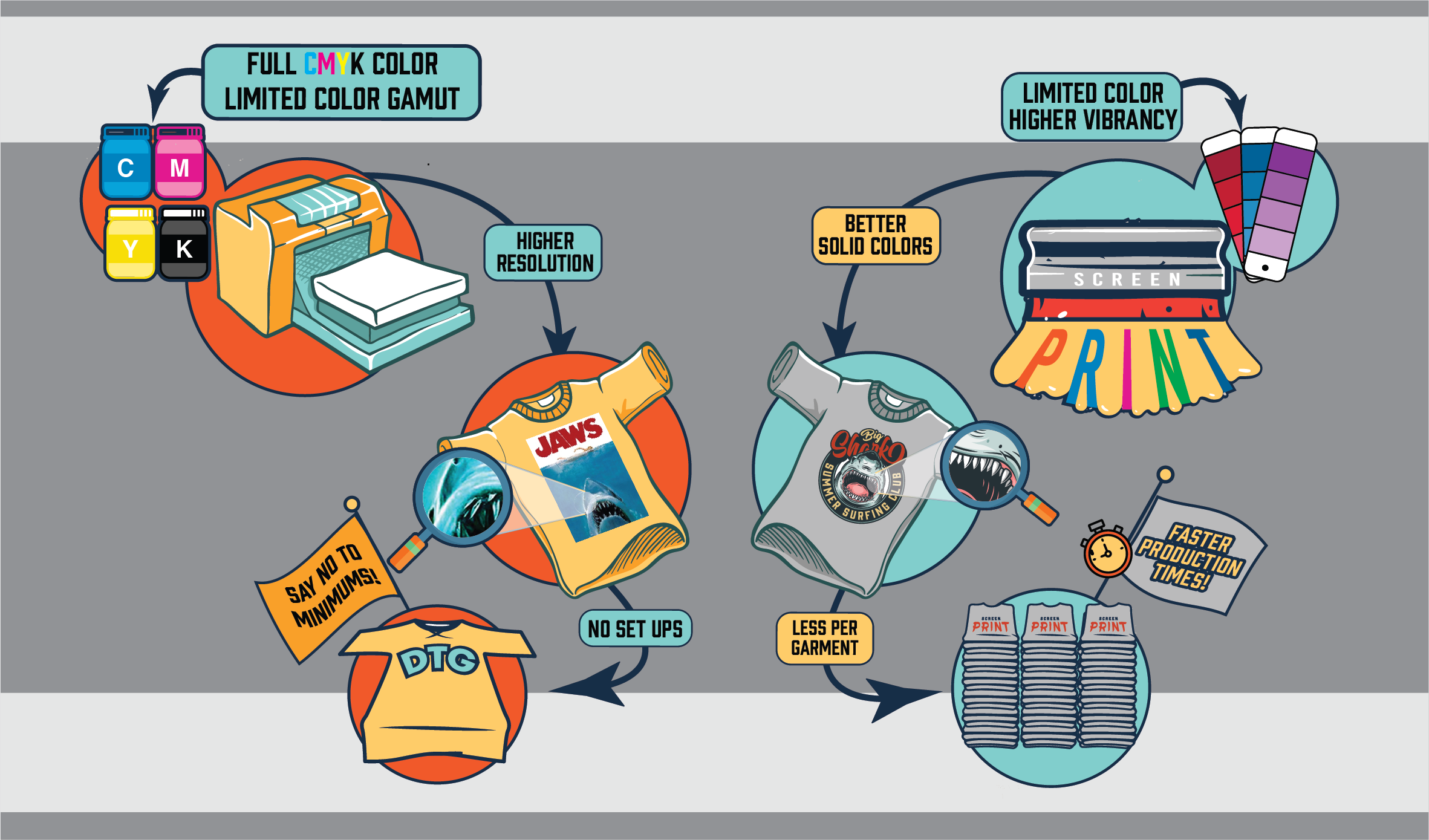Some Known Details About Tx Tees
Some Known Details About Tx Tees
Blog Article
The 45-Second Trick For Tx Tees
Table of ContentsEverything about Tx TeesThe Definitive Guide to Tx TeesExcitement About Tx TeesA Biased View of Tx TeesThe Facts About Tx Tees RevealedThe Only Guide for Tx TeesAll about Tx Tees
That brings your overall to roughly $1,900 gross and delivery. Build up various other prices, like the variety of utilities it takes to run the shop and the price of ink and solution per layout. embroidery shop. Take the print listed below. This is a one-color picture, so the expense of ink per shirt is about 20 cents.The emulsion should only be a couple of cents since you 'd just require to layer one display for this work. Usually, printers try to make up to 45% profit on a print job.

With DTF, you can print a handful of t shirts, or simply one. Use the very same calculator as the area above to compute just how much revenue you 'd use DTF transfers. Compare the costs and revenues to whichever method talks finest to your setup and procedure. Both screen printing and DTF have their particular niches worldwide.
7 Simple Techniques For Tx Tees
The very best method to recognize? Ask about and see what printing shop like yours are doing. custom screen printing. Try both out and see which you like better
When you're selecting what kind of printing technique to make use of for publishing your art work designs on your garments, it is essential that you recognize the distinctions in between these 2 strategies so you can make the most of results while lessening expenses. Display printing is the most frequently utilized strategy for publishing layouts on fabrics.
DTG printing is additionally known as area or straight to garment printing due to the fact that it publishes only what is needed as opposed to making a screen as screen printers do. https://disqus.com/by/txtees02/about/. Screen printing functions by screen filler squeegee screen printing ink display mesh screen, after that transferring the picture to garment using warm and/or stress
The DTG printer utilizes unique dye-sublimation inks that are applied right into a pre-designed image by an electronic printing system. The inks become part of the material, permitting vibrant colors and remarkable detail. It's additionally referred to as place or straight to garment printing due to the fact that it publishes only what is required rather of making a screen as screen printers do.
The Ultimate Guide To Tx Tees
It's much quicker - you can publish a fullcolor image in minutes, as opposed to hours for screen printing. Second, there's no established up time or expenses entailed - you can publish any kind of design you like, without having to produce a screen first. Third, there's no waste - since screen printers display print one layout at once, they have to evaluate each shade independently.
The paper is really pricey and can just be utilized when. Once it's printed on, it needs to be discarded. - The initial acquisition rate is less than the in advance investment of DTG printers- You can print multi-color styles one screen at once as opposed to needing to print each color independently like DTG printing.

The Tx Tees Ideas
However, instead of utilizing display mesh as screen printers do, color sublimation printers make use of laser technology to transfer your photos onto garments or paper. A warm procedure moves the color from its solid-state directly into the gas stage which in turn merges it onto textile substrates when they are quickly warmed to heats under high pressure.
Sublimation printing is eco-friendly. It utilizes less water than screenprinting, and because it doesn't entail making use of damaging solvents, it's risk-free for all kinds of apparel. The dye sublimation inks are also odor free when treated, unlike screen printers that utilize unsafe chemicals during the screen printing process that leave behind an unpleasant odor.
They likewise conserve cash on costly equipment like exposure units since dye sublimation printers don't require a UV exposure device or a flash treatment stove that is commonly made use of in display printing (t-shirt printing). What is direct to garment printing (DTG Printing)? DTG printing is an electronic screenprinting procedure that prints directly onto textile utilizing specialized inkjet printers
The Tx Tees Statements
DTG printing uses numerous advantages over standard screenprinting, including the ability to publish photographic high quality images, greater shade vibrancy, and the capability to print layouts on darker materials. DTG printers work by warming the textile ink till it develops into a gas. The gas after that penetrates the fabric, bonding with the fibers to create an irreversible print.

Display printers just prepare their screen then begin publishing official site up until they run out of product or ink.- There is a large range of seasoned display printers around the world, which can be valuable for beginners. - It's a slower process - display printers often need to await the ink to dry before they can print the following shade- Screen printers require manual work, so there's a greater discovering contour and it takes longer to create a high-quality layout- Display printing isn't as precise as DTG printing, so you may get some "bleeding" of colors from one component of the picture onto another if not done effectively.
Tx Tees Things To Know Before You Buy
Instead of making use of screen mesh as screen printers do, color sublimation printers use laser modern technology to transfer your pictures onto garments or paper. A warmth process transfers the color from its solid-state straight into the gas stage which consequently integrates it onto material substratums when they are rapidly heated up to high temperature levels under high pressure.
Sublimation printing is green. It uses less water than screenprinting, and since it does not involve using unsafe solvents, it's risk-free for all kinds of garments. The dye sublimation inks are likewise odor-free when healed, unlike screen printers that use dangerous chemicals throughout the display printing process that leave behind an unpleasant odor.
They additionally save money on expensive tools like exposure units because color sublimation printers do not require a UV exposure unit or a flash cure oven that is usually utilized in screen printing. What is direct to garment printing (DTG Printing)? DTG printing is a digital screenprinting process that prints directly onto material utilizing specialized inkjet printers.
The Definitive Guide to Tx Tees
DTG printing uses several advantages over conventional screenprinting, including the ability to publish photographic high quality images, better shade vibrancy, and the ability to publish styles on darker fabrics. DTG printers function by warming the textile ink until it develops into a gas. The gas then penetrates the material, bonding with the fibers to create an irreversible print.
Report this page